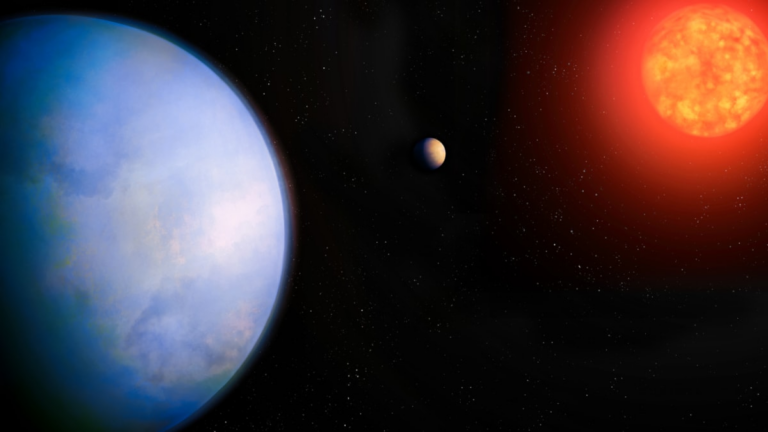Last Updated:October 25, 2025, 20:50 IST
The discovery, led by an international team that included scientists from Penn State University, offers fresh hope in the ongoing search for Earth-like planets.
GJ 251 c offers one of the best nearby candidates for future atmosphere studies. (Penn State University)
Astronomers have identified a nearby potential “super-Earth” that could support life. The newly found exoplanet, named GJ 251 c, located less than 20 light-years from Earth, is likely about four times heavier than Earth and rocky in nature.
The discovery, led by an international team that included scientists from Penn State University, offers fresh hope in the ongoing search for Earth-like planets that could potentially support life.
The discovery was announced in a paper published this week in The Astronomical Journal.
The planet orbits a small red dwarf star and resides in its habitable zone, often called the “Goldilocks Zone,” where temperatures could allow liquid water to exist if there is an atmosphere.
Due to its mass and proximity to its host star, GJ 251 c falls into the category of a “super-Earth”-a class of exoplanets that are larger than Earth but smaller than gas giants like Neptune.
“We look for these types of planets because they are our best chance at finding life elsewhere,” Suvrath Mahadevan, Professor of Astronomy at Penn State and co-author on the study, said.
The discovery followed two decades of patient monitoring with a variety of instruments, such as the Habitable-Zone Planet Finder (HPF) constructed at Penn State and the NEID spectrometer at Kitt Peak National Observatory in Arizona. Both devices monitor tiny shifts in a star’s light that indicate the presence of orbiting worlds.
These instruments detect exoplanets by monitoring the subtle “wobble” in a star’s movement caused by the gravitational pull of an orbiting planet. In GJ 251’s case, astronomers identified a 54-day periodic signal revealing the presence of GJ 251 c beyond a previously known inner planet, GJ 251 b.
Located about 18 light-years away in the constellation Gemini, GJ 251 c offers one of the best nearby candidates for future atmosphere studies. Although, present era’s telescopes cannot directly image it, future 30-metre-class telescopes may be able to observe its atmosphere for indications of life, like oxygen or methane.
Mahadevan said the planet’s proximity offers an opportunity to eventually observe its light apart from its star.
The research team plans to continue monitoring the system as new telescopes become operational. Scientists believe GJ 251 c offers one of the best nearby chances to uncover evidence of life beyond our Solar System.
 Shobhit Gupta
Shobhit Gupta
Shobhit Gupta is a sub-editor at News18.com and covers India and International news. He is interested in day to day political affairs in India and geopolitics. He earned his BA Journalism (Hons) degree from Ben…Read More
Shobhit Gupta is a sub-editor at News18.com and covers India and International news. He is interested in day to day political affairs in India and geopolitics. He earned his BA Journalism (Hons) degree from Ben… Read More
Location :
United States of America (USA)
First Published:
October 25, 2025, 20:49 IST
News world Not Too Far, Not Too Cold: Scientists Spot A ‘Super-Earth’ That Could Host LifeDisclaimer: Comments reflect users’ views, not News18’s. Please keep discussions respectful and constructive. Abusive, defamatory, or illegal comments will be removed. News18 may disable any comment at its discretion. By posting, you agree to our Terms of Use and Privacy Policy.
Read More
Images are for reference only.Images and contents gathered automatic from google or 3rd party sources.All rights on the images and contents are with their legal original owners.

